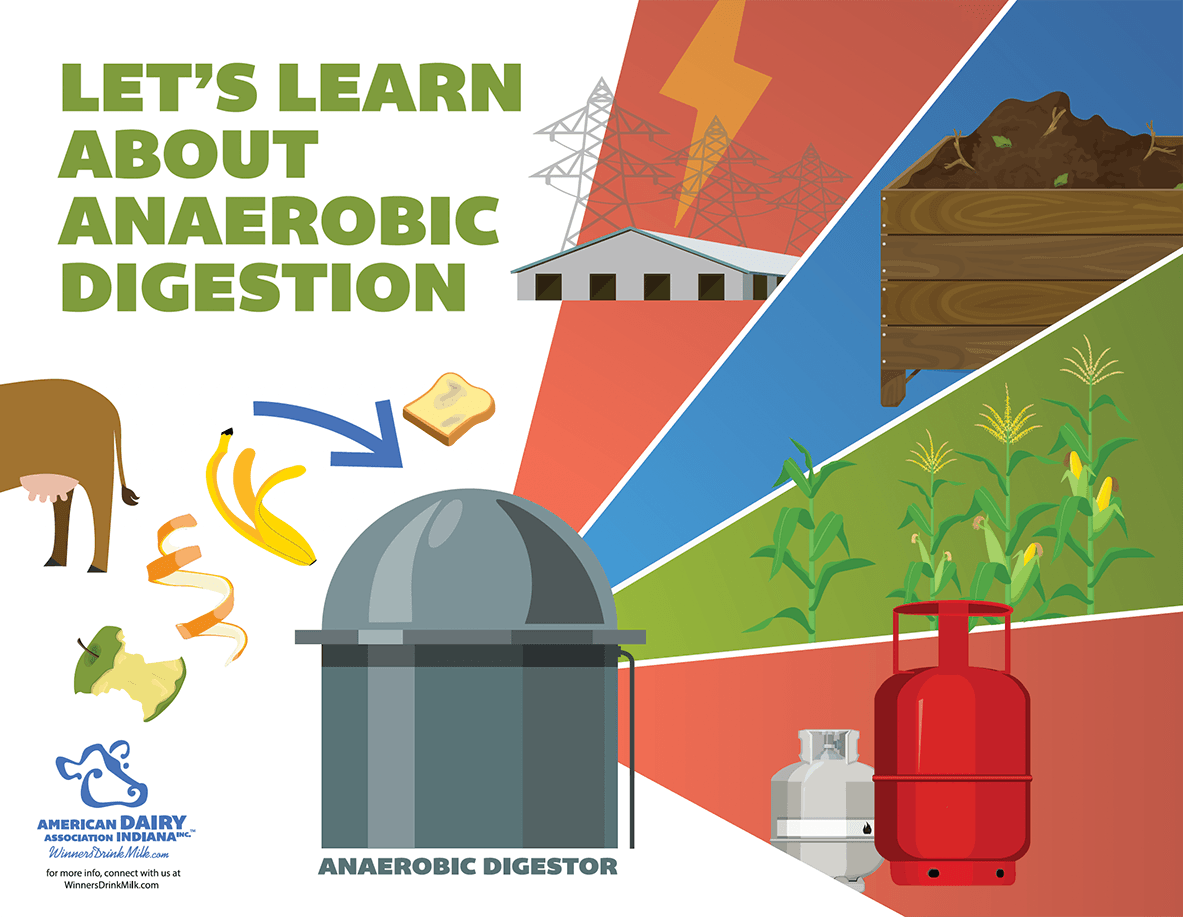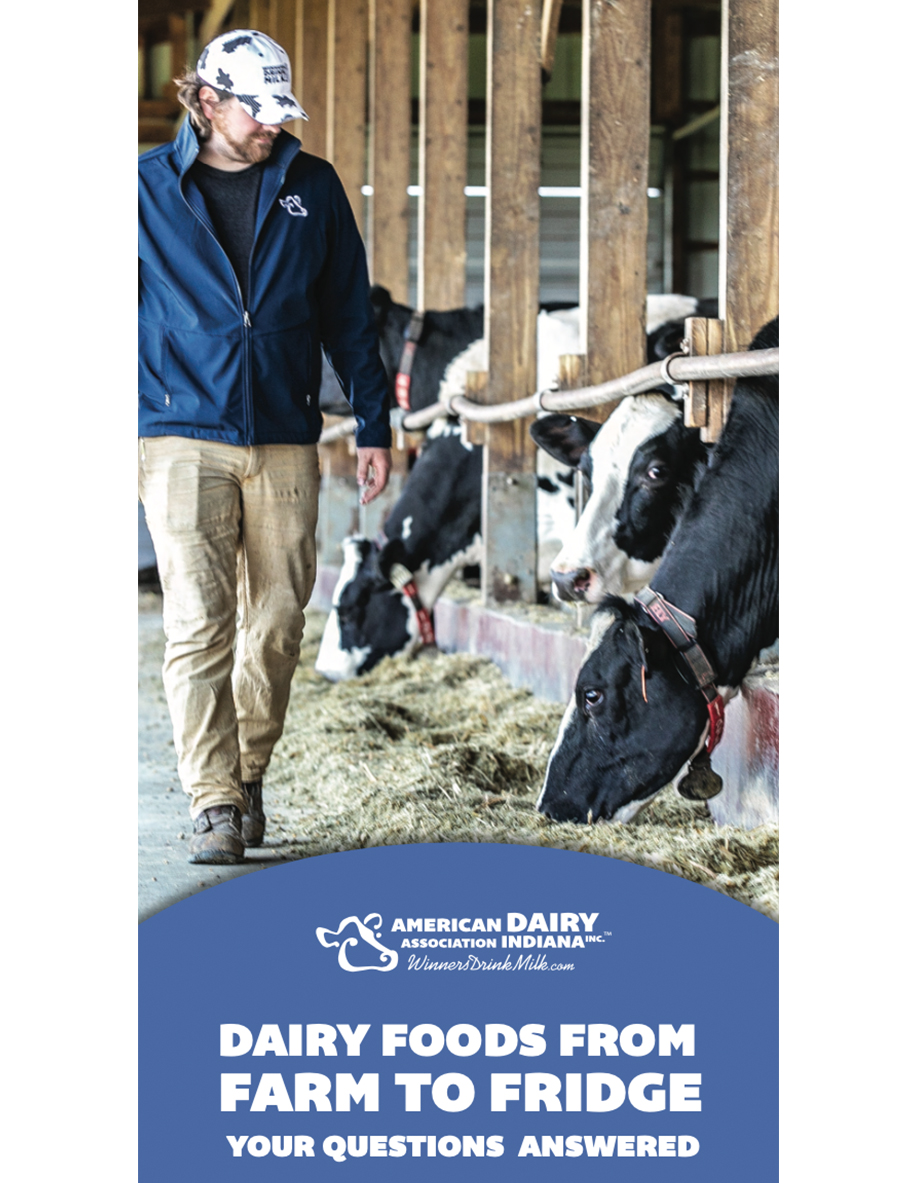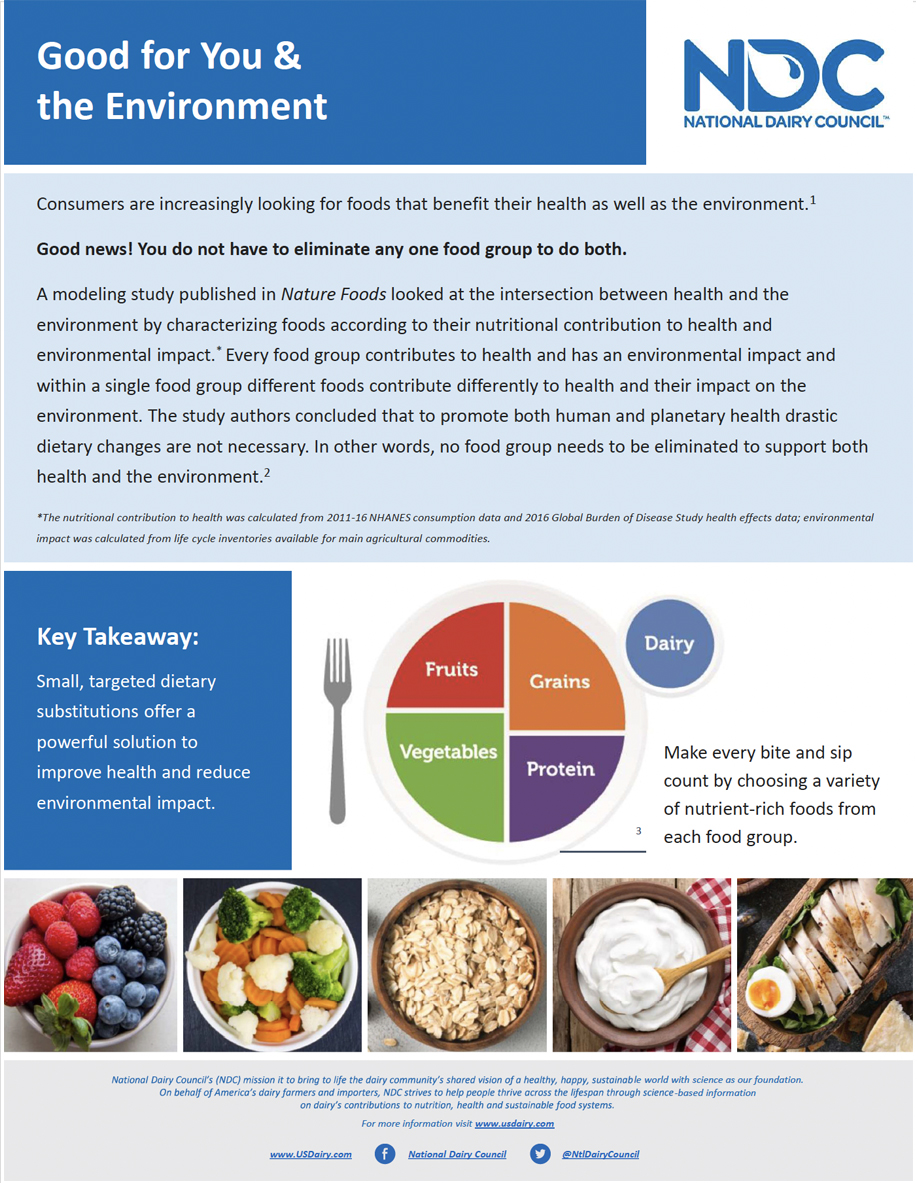On the Farm
Indiana is home to almost 700 dairy farms of all shapes and sizes that together provide a home for over 189,000 dairy cows. The average farm has 200 cows and over 97 percent of dairy farms in Indiana are family owned.
Indiana is home to almost 700 dairy farms of all shapes and sizes that together provide a home for over 189,000 dairy cows. The average farm has 200 cows and over 97 percent of dairy farms in Indiana are family owned.
Many Indiana dairy farms are multi-generational, with immediate and extended family all working together to make sure the cows are happy and comfortable. Dairy farming is hard work — farmers must milk each and every cow two to three times a day, every day (including holidays)! Many dairy farmers begin work at three or four in the morning, and don’t finish until the sun goes down.
Dairy farmers work with nutritionists and veterinarians to make sure their cows are getting a balanced diet and are healthy. Many Indiana dairy farmers also grow corn, soybeans, and hay to feed to their cows, and use their cows’ manure to fertilize the fields. This allows them to be environmentally friendly by recycling the cows’ waste and reducing their need to use chemical fertilizer.
Meet the Moo Crew
Satisfy your cow curiosity with some fun facts about dairy cows.

Holstein
The Holstein cow originally was called Holstein Friesian, but the name was shortened to Holstein. This breed is the top milk-producing breed in the world.
FUN FACTS
Average Size: 1,500 lbs
Color: Predominantly black-and-white
Average Milk Production: 9 gallons per cow per day
Origin: Netherlands
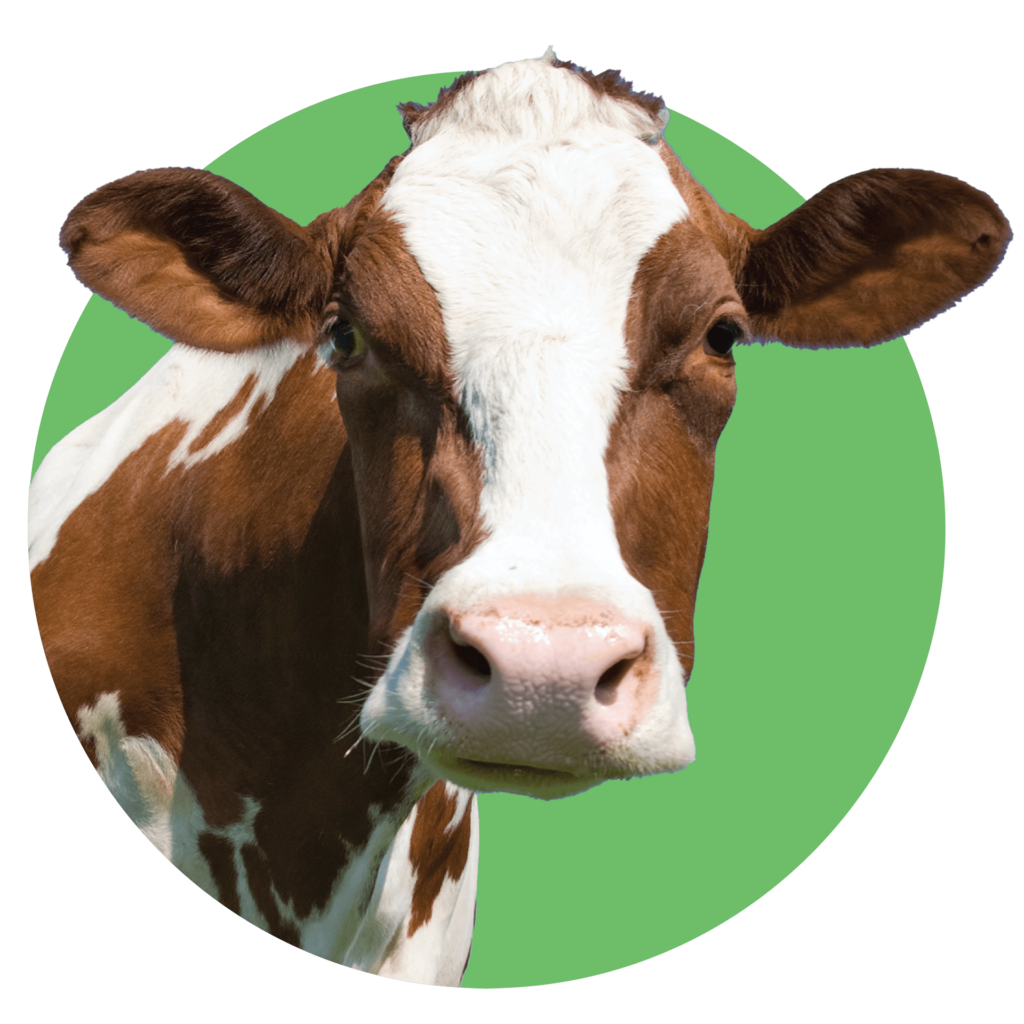
Red and White Holstein
The Red and White Holstein is a color variation of the traditional Holstein breed, sharing the same high milk production and large frame. Their distinct red-and-white coat comes from a recessive gene.
FUN FACTS
Average Size: 1,400 lbs
Color: Red and white
Average Milk Production: 8–10 gallons per cow per day
Origin: Netherlands

Jersey
Jerseys are prized for their high butterfat milk, making their milk ideal for cheese, butter and cream production.
FUN FACTS
Average Size: 1,000 lbs
Color: Tan with a black nose bordered by a white muzzle
Average Milk Production: 4–6 gallons per cow per day
Origin: The Isle of Jersey in the English Channel
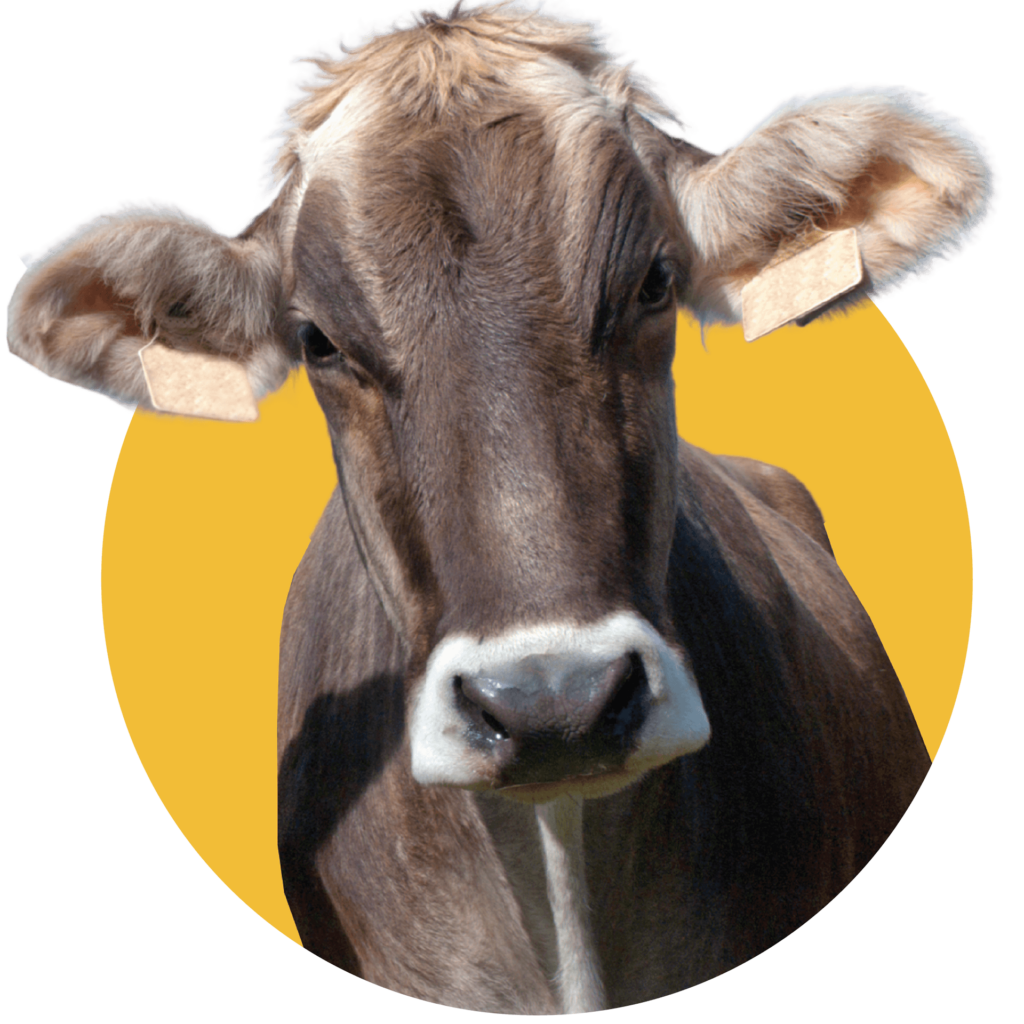
Brown Swiss
The Brown Swiss, one of the oldest dairy breeds, are excellent milk producers, second only to Holsteins in volume, and their milk is prized for its high protein-to-fat ratio, making it ideal for cheese production.
FUN FACTS
Average Size: 1,350 lbs
Color: Light brown to grayish-brown, with a white muzzle
Average Milk Production: 6–8 gallons per cow per day
Origin: The Alps of Switzerland
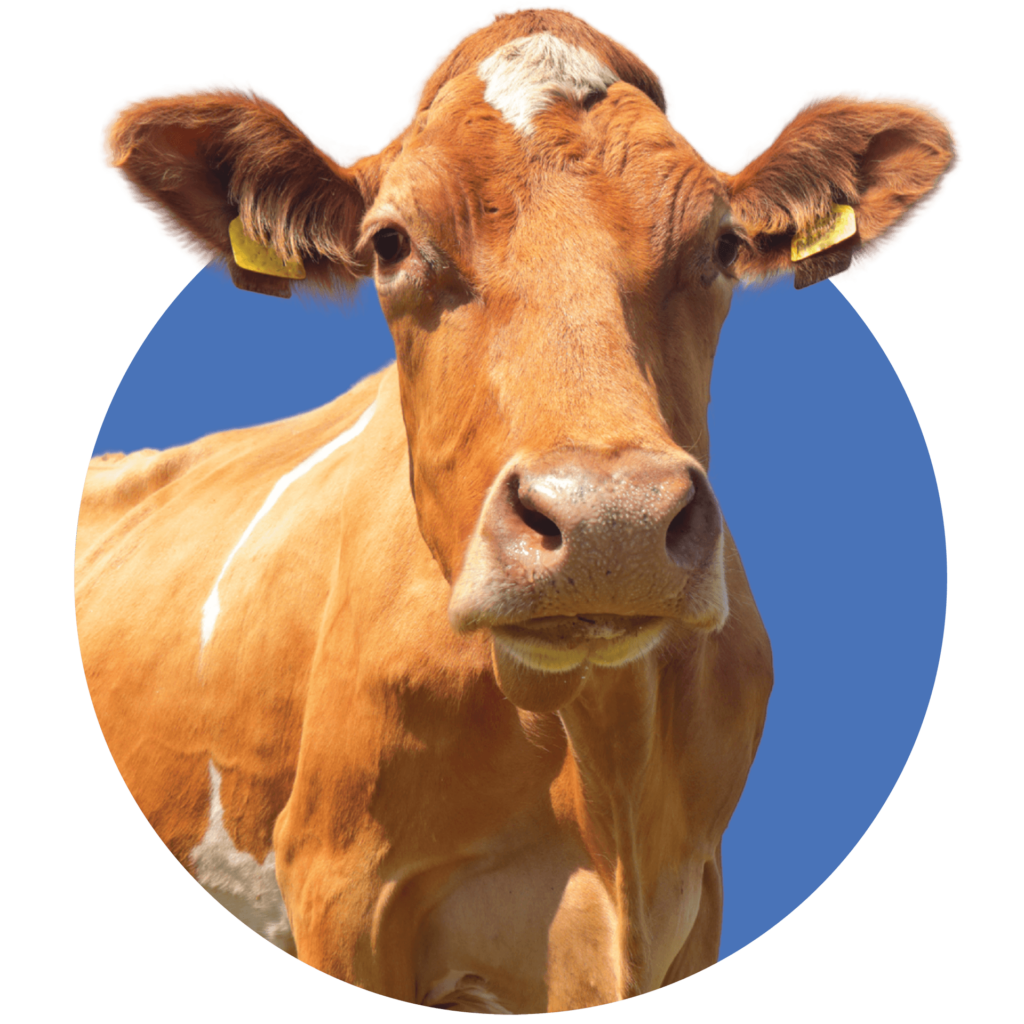
Guernsey
The Guernsey is known for its rich golden-colored milk, which has a high beta-carotene content. These cows are valued for their efficient milk production with lower feed requirements.
FUN FACTS
Average Size: 1,400 lbs
Color: Reddish-brown with white markings
Average Milk Production: 6–8 gallons per cow a day
Origin: The Isle of Guernsey in the English Channel
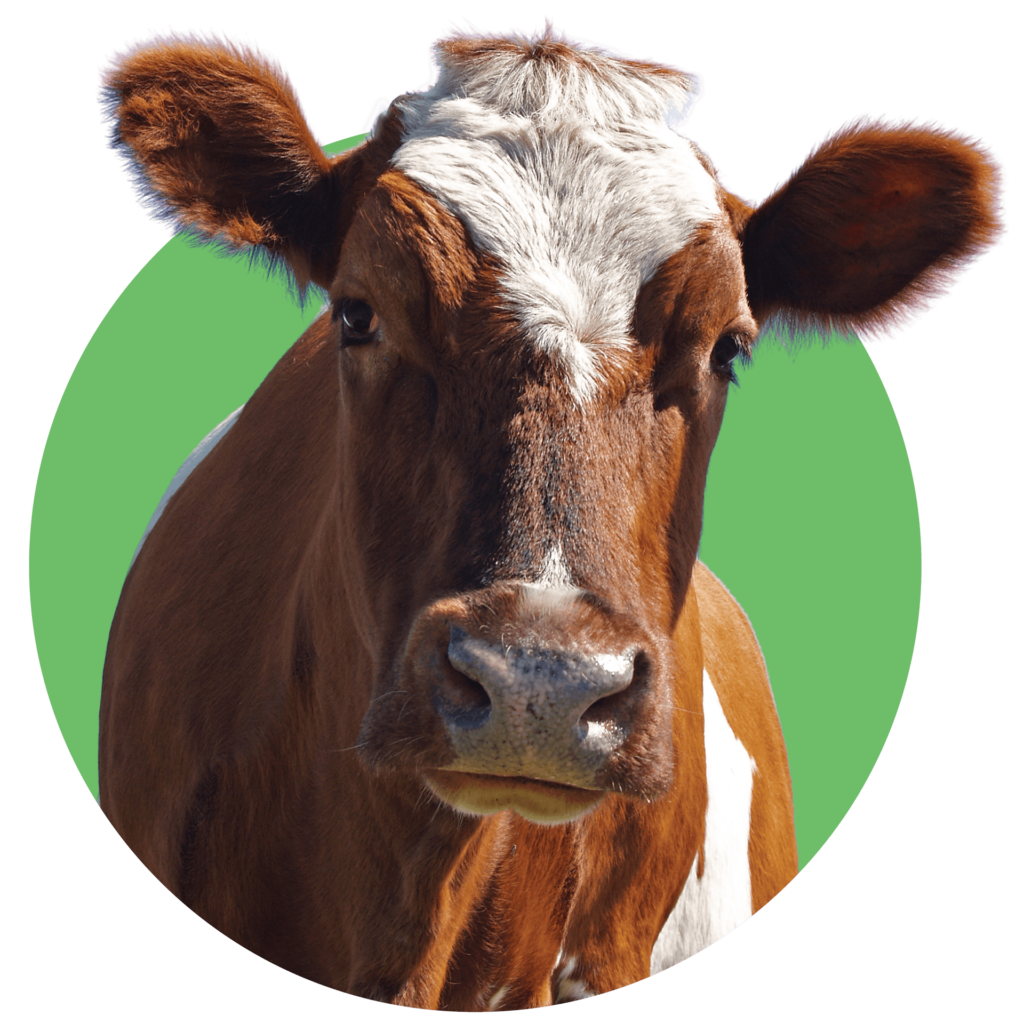
Ayrshire
The Ayrshire is known as the “aristocrat” of dairy breeds because of their size and vigor. They are also known for their efficient milk production, adaptability and strong udder structure.
FUN FACTS
Average Size: 1,200 lbs
Color: White and red, varying from light to dark shades
Average Milk Production: 5–7 gallons per cow per day
Origin: Scotland
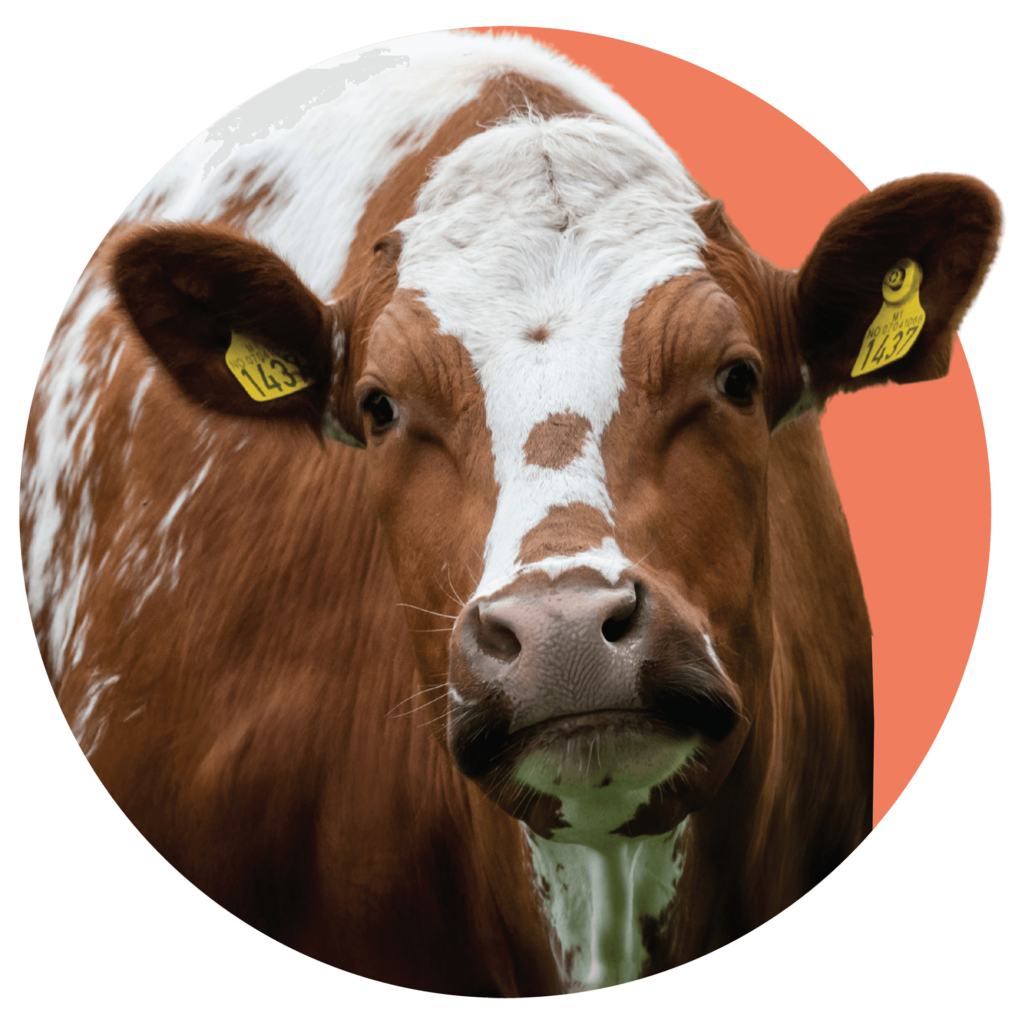
Milking Shorthorn
The Milking Shorthorn is known for its efficient milk production, longevity and adaptability. This breed was one of the first types of cows brought over to the United States.
FUN FACTS
Average Size: 1,100–1,400 lbs
Color: Red, white, or roan (a mix of red and white hairs)
Average Milk Production: 5–7 gallons per cow per day
Origin: Northeastern England
All About Cows
Dairy farming is hard work — farmers must milk each and every cow two to three times a day, every day (including holidays)! Many dairy farmers begin work at three or four in the morning, and don’t finish until the sun goes down.
Dairy farmers work with nutritionists and veterinarians to make sure their cows are getting a balanced diet and are healthy. Many Indiana dairy farmers also grow corn, soybeans, and hay to feed to their cows, and use their cows’ manure to fertilize the fields. This allows them to be environmentally friendly by recycling the cows’ waste and reducing their need to use chemical fertilizer.
TOP 5 Cow QUESTIONS ANSWERED
Dairy cows eat about 100 pounds of feed and drink 30-50 gallons of water (about a bathtub full) each day. Their feed is specially formulated by a dairy nutritionist and is typically a combination of hay, grain, silage, and proteins (such as soybean meal), plus vitamins and minerals. 80% of a dairy cow’s diet comes from plant fibers and food waste that humans can’t digest and would otherwise go to landfills.
Calves represent the future of the farm, so dairy farmers work extremely hard to keep them healthy, which is why newborn calves are moved to clean individual pens like hutches or special calf barns within 24 hours of birth.
Newborns have vulnerable immune systems so it is important to protect them from germs in the environment or diseases that can be passed on from adult cows.
Cows do occasionally get sick and sometimes require medicine just like we do. Large-animal veterinarians prescribe antibiotics only when needed. These cows are housed separately so they can be closely monitored and identified with markings to make sure they are not milked with the rest of the herd.
The well-being, protection, and comfort of cows are top priority on all farms. Access to pasture is determined by geography, land availability and weather conditions. Many of today’s dairy farms use “free-stall housing,” a type of climate-controlled barn, where cows move about as they choose, equipped with fans, misters, soft bedding like sand, mattresses and waterbeds to keep them comfortable.
Different cow breeds produce milk with different fat and protein content; for example, Holsteins produce larger quantities of milk with lower fat, while Jerseys produce less milk with higher fat and protein. These differences make certain breeds’ milk more suitable for specific uses like cheesemaking due to higher protein levels. While breed is key, diet and health also influence milk composition.
Farm Facts
There are almost 700 dairy farms in Indiana and 95% of them are family-owned.
Some farms use robot technology to milk the cows and clean the barns.
Dairy farming adds $810 million to the Hoosier economy.
Dairy foods are among the safest and most highly regulated foods available.
Milk travels from the farm to the grocery store in about 48 hours.
IS DAIRY GOOD FOR OUR AIR, LAND and WATER?
Within the last decade, dairy farms have contributed to a healthier environment.
Through the use of safe and innovative technology, Indiana dairy farmers deliver exceptional animal care and fresh, nutritious dairy foods. In recent decades, reducing energy, reusing water and recycling manure for fertilizer and energy have become cornerstones of a dairy farm’s sustainability commitment.
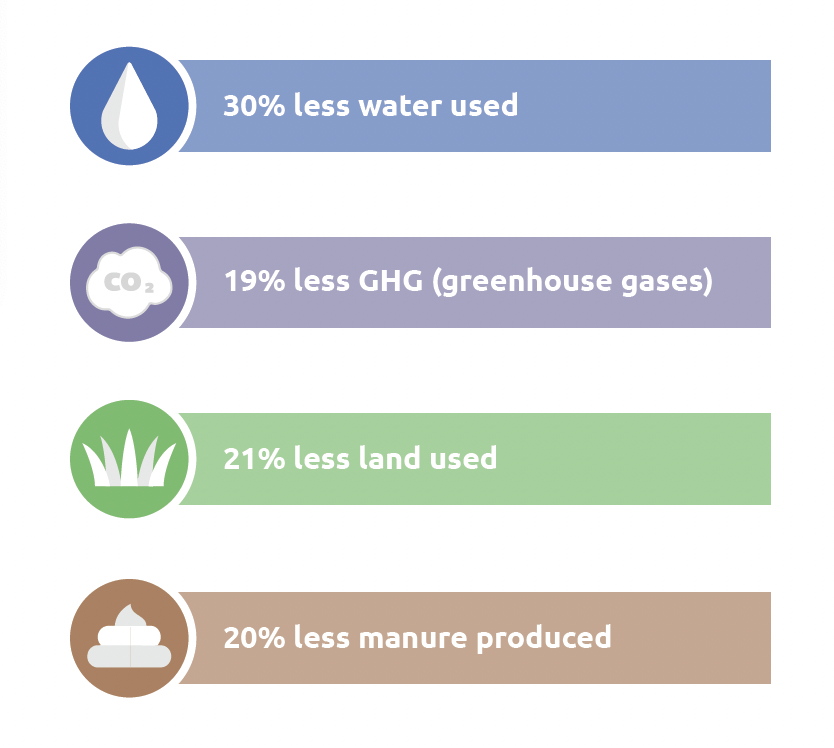
Farm and Cow FAQs
Most dairy farmers live and work on their farms every day, so it’s important for them to protect the land, water and air for their families, their surrounding communities and future generations. All dairy farms must meet standards for manure storage, handling and recycling per guidelines from their state and the U.S. Environmental Protection Agency (EPA). Caring for the environment is a smart business practice, and helps to ensure healthy cows, happy neighbors and a safe home.
While there are natural odors associated with animal agriculture, dairy farmers work hard to minimize these odors by maintaining clean facilities and managing manure, which is an important nutrient for cropland. Research and development has inspired new practices and innovative technologies to help farmers maintain clean air for everyone.
Dairy cow manure is always put to good use. Some of it is spread on the fields as a natural source of fertilizer. Or it can be composted and sold to local garden stores. Some farmers dry it and use it as a bedding source similar to sawdust. There are even farmers in the U.S. that are able to turn their manure into power through methane digesters, a process that converts manure to energy.
What about manure getting into the groundwater?
Quality groundwater is essential to dairy farms. Cows need to drink clean water so that they will produce quality milk. Government agencies have rigorous processes for granting permits for dairy farms, for inspecting and testing the water and for recycling manure. In addition, each farm maintains a Nutrient Management Plan which helps ensure that the nutrients go into the crops, not the groundwater.
How do modern dairy farmers serve as good stewards of the environment for future generations?
Modern technology helps farmers boost efficiency and care for their animals and surroundings. Technologies like methane digesters, composting and conservation buffers actively work to conserve energy and water and reduce odor and waste, while creating organic fertilizer for local nurseries, neighbors and croplands. It’s all part of making farms sustainable for the future.
Quality groundwater is essential to dairy farms. Cows need to drink clean water so that they will produce quality milk. Government agencies have rigorous processes for granting permits for dairy farms, for inspecting and testing the water and for recycling manure. In addition, each farm maintains a Nutrient Management Plan which helps ensure that the nutrients go into the crops, not the groundwater.
Modern technology helps farmers boost efficiency and care for their animals and surroundings. Technologies like methane digesters, composting and conservation buffers actively work to conserve energy and water and reduce odor and waste, while creating organic fertilizer for local nurseries, neighbors and croplands. It’s all part of making farms sustainable for the future.
All milk intended for direct consumption should be pasteurized — it’s a matter of food safety. Pasteurization is a simple, effective method to kill potentially harmful bacteria without affecting the taste or nutritional value of milk. With standard pasteurization, milk is heated to a temperature of at least 161 degrees Fahrenheit for not less than 15 seconds, followed by rapid cooling.
No. All milk – both regular and organic – is tested for antibiotics. Any tanker that tests positive is disposed of immediately.
No. Stringent government standards ensure that all milk is safe, pure and nutritious. The most recent government testing found that all of the milk samples tested were found to be completely free from pesticide residue.
Bovine somatotropin (bST) is a hormone that. occurs naturally in all cows, and its physiological function is to help direct milk production. Through biotechnology, scientists have created a synthesized copy of bST–which some dairy farmers choose to use as a milk production management tool on some cows.
No. Hormones are naturally present in many foods of plant and animal origin including milk. Some farmers choose to supplement some of their cows with additional bST, to increase milk production, but science shows that there is no effect on hormone levels in the milk itself.
Since rbST was approved for use by the Food and Drug Administration in the early 1990s, its safety has been affirmed and reaffirmed by the scientific community. Scientists tell us that rbST is species-specific, meaning that it is biologically inactive in humans. Also, pasteurization destroys 90 percent of rbST in milk. Numerous scientific studies have shown there is no significant difference between milk from rbST supplemented and non-rbST-supplemented cows. That’s why the FDA has established that dairy products from cows treated with rbST do not need to be labeled.
Organic milk is just one of many options in the dairy case to fit different lifestyles and personal preferences. Organic and regular milk are equally as good for you. Check the nutrition label, and you’ll see that every eight-ounce serving offers the same amount of essential nutrients.
For information on the nutritional value of dairy products, visit the National Dairy Council.
Dairy farmers strive to deliver high-quality animal care every day and they take tremendous pride in doing so. Healthy cows produce high-quality products, so it doesn’t make sense for a farmer to give his or her cows anything less than the best treatment. Nutritious diets, comfortable living conditions and good medical care are among the many practices routinely used by dairy farmers to ensure a healthy herd.
Dairy farmers provide comfortable, safe and hygienic conditions for both mother and calf during the birthing process and afterward. Because dairy farmers care about the health of their calves, the calves are placed into separate living quarters shortly after birth to control their environment and protect their health. Since newborn calves need time to build up their immune systems, it’s better that they aren’t around older animals — and the possible germs those animals could pass along. Also, it’s very important that the calves get colostrum — the mother’s first milk after giving birth — when they are newborns. Colostrum is high in fat and protein and has lots of antibodies in it that help strengthen the immune system. When calves are left to nurse their mothers, they might not receive enough. That’s why dairy farmers often step in and feed them colostrum from a bottle.
Sometimes, cows get sick, just as some humans do. Without proper medical care, the cows would become seriously ill or die. So, it is simply humane to treat them– and make them well again with medications prescribed by veterinarians. If a cow is treated with antibiotics, she is kept in a separate pen or milking group. The milk from that cow is disposed of and does not reach the food supply.
A specific set of farming practices makes milk and other foods eligible for “certified organic” status. On organic dairies, cows must receive feed that is certified organic and without genetically-modified ingredients. They are not treated with supplemental hormones and are not given certain medications to treat illness. If they are given medication, then they must permanently leave the milking herd. They also must have access to the pasture. Many of the same practices are utilized by conventional dairy farmers as all farmers make the welfare of their animals and environmental stewardship top priorities.
No. Of the almost 20,000 dairy farms in America today most are smaller farms with less than 200 cows. In fact, 95% of American dairy farms, including larger farms, are family-owned and operated. Like other business owners, many dairy farmers are modernizing, expanding and improving overall efficiency in order to continue to support their families and provide consumers with high-quality, affordable milk and dairy products. Dairy farming is a very diverse industry, and there is room for all sizes of dairy farms.
Most dairy farmers live and work on their farms everyday, so it’s important for them to protect the land, water and air for their families, their surrounding communities and future generations. All dairy farms must meet standards for manure storage, handling and recycling per guidelines from their state and the U.S. Environmental Protection Agency (EPA). Caring for the environment is a smart business practice, and helps to ensure healthy cows, happy neighbors and a safe home.
While there are natural odors associated with animal agriculture, dairy farmers work hard to minimize these odors by maintaining clean facilities and managing manure, which is an important nutrient for cropland. Research and development has inspired new practices and innovative technologies to help farmers maintain clean air for everyone.
Dairy cow manure is always put to good use. Some of it is spread on the fields as a natural source of fertilizer. Or it can be composted and sold to local garden stores. Some farmers dry it and use it as a bedding source similar to sawdust. There are even farmers in the U.S. that are able to turn their manure into power through methane digesters, a process that converts manure to energy.
Quality groundwater is essential to dairy farms. Cows need to drink clean water so that they will produce quality milk. Government agencies have rigorous processes for granting permits for dairy farms, for inspecting and testing the water and for recycling manure. In addition, each farm maintains a Nutrient Management Plan which helps ensure that the nutrients go into the crops, not the groundwater.
Modern technology helps farmers boost efficiency and care for their animals and surroundings. Technologies like “methane digesters,” composting and conservation buffers actively work to conserve energy and water and reduce odor and waste, while creating organic fertilizer for local nurseries, neighbors and croplands. It’s all part of making farms sustainable for the future.

